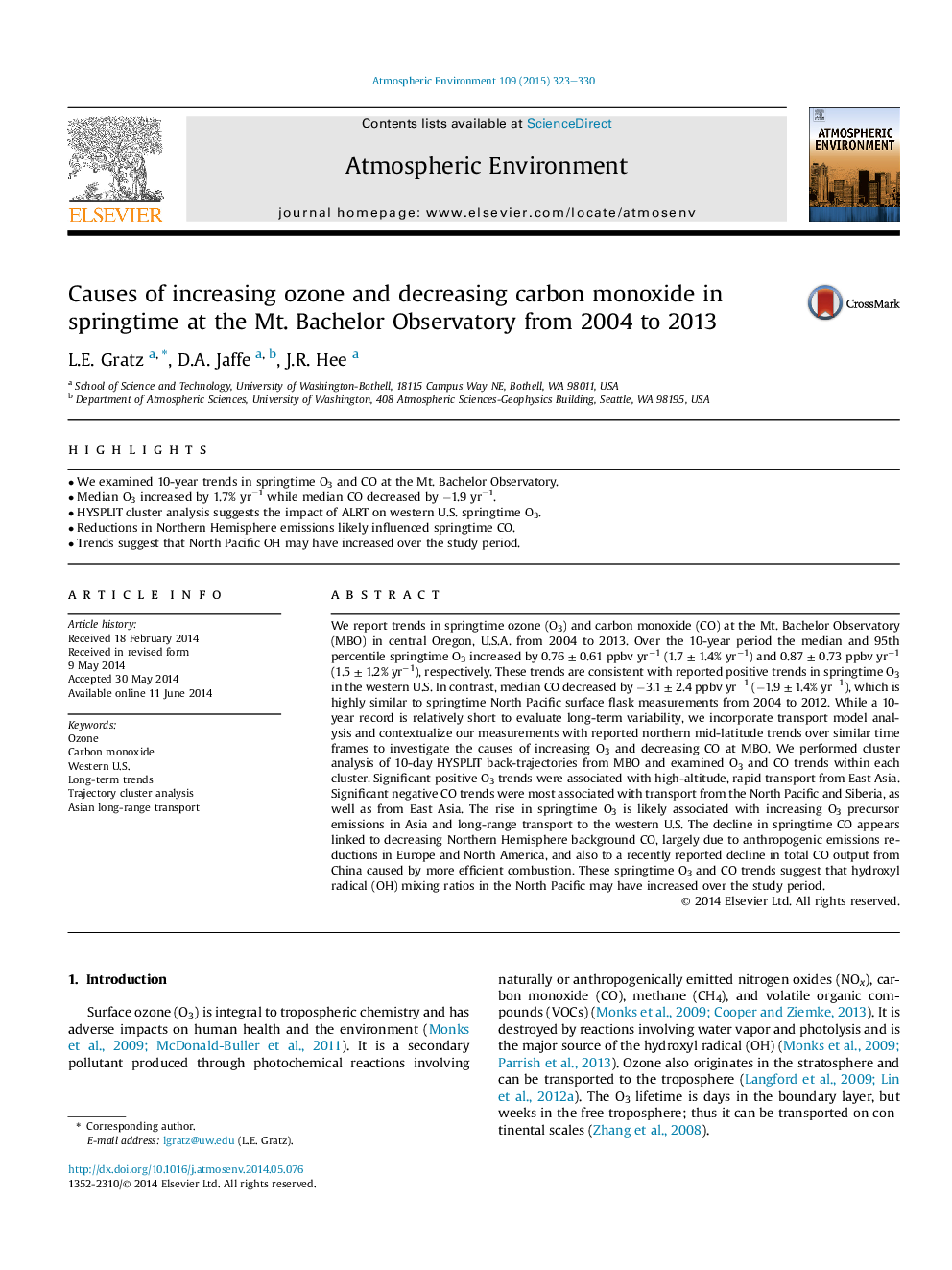| کد مقاله | کد نشریه | سال انتشار | مقاله انگلیسی | نسخه تمام متن |
|---|---|---|---|---|
| 6338258 | 1620362 | 2015 | 8 صفحه PDF | دانلود رایگان |
- We examined 10-year trends in springtime O3 and CO at the Mt. Bachelor Observatory.
- Median O3 increased by 1.7% yrâ1 while median CO decreased by â1.9 yrâ1.
- HYSPLIT cluster analysis suggests the impact of ALRT on western U.S. springtime O3.
- Reductions in Northern Hemisphere emissions likely influenced springtime CO.
- Trends suggest that North Pacific OH may have increased over the study period.
We report trends in springtime ozone (O3) and carbon monoxide (CO) at the Mt. Bachelor Observatory (MBO) in central Oregon, U.S.A. from 2004 to 2013. Over the 10-year period the median and 95th percentile springtime O3 increased by 0.76 ± 0.61 ppbv yrâ1 (1.7 ± 1.4% yrâ1) and 0.87 ± 0.73 ppbv yrâ1 (1.5 ± 1.2% yrâ1), respectively. These trends are consistent with reported positive trends in springtime O3 in the western U.S. In contrast, median CO decreased by â3.1 ± 2.4 ppbv yrâ1 (â1.9 ± 1.4% yrâ1), which is highly similar to springtime North Pacific surface flask measurements from 2004 to 2012. While a 10-year record is relatively short to evaluate long-term variability, we incorporate transport model analysis and contextualize our measurements with reported northern mid-latitude trends over similar time frames to investigate the causes of increasing O3 and decreasing CO at MBO. We performed cluster analysis of 10-day HYSPLIT back-trajectories from MBO and examined O3 and CO trends within each cluster. Significant positive O3 trends were associated with high-altitude, rapid transport from East Asia. Significant negative CO trends were most associated with transport from the North Pacific and Siberia, as well as from East Asia. The rise in springtime O3 is likely associated with increasing O3 precursor emissions in Asia and long-range transport to the western U.S. The decline in springtime CO appears linked to decreasing Northern Hemisphere background CO, largely due to anthropogenic emissions reductions in Europe and North America, and also to a recently reported decline in total CO output from China caused by more efficient combustion. These springtime O3 and CO trends suggest that hydroxyl radical (OH) mixing ratios in the North Pacific may have increased over the study period.
Journal: Atmospheric Environment - Volume 109, May 2015, Pages 323-330
